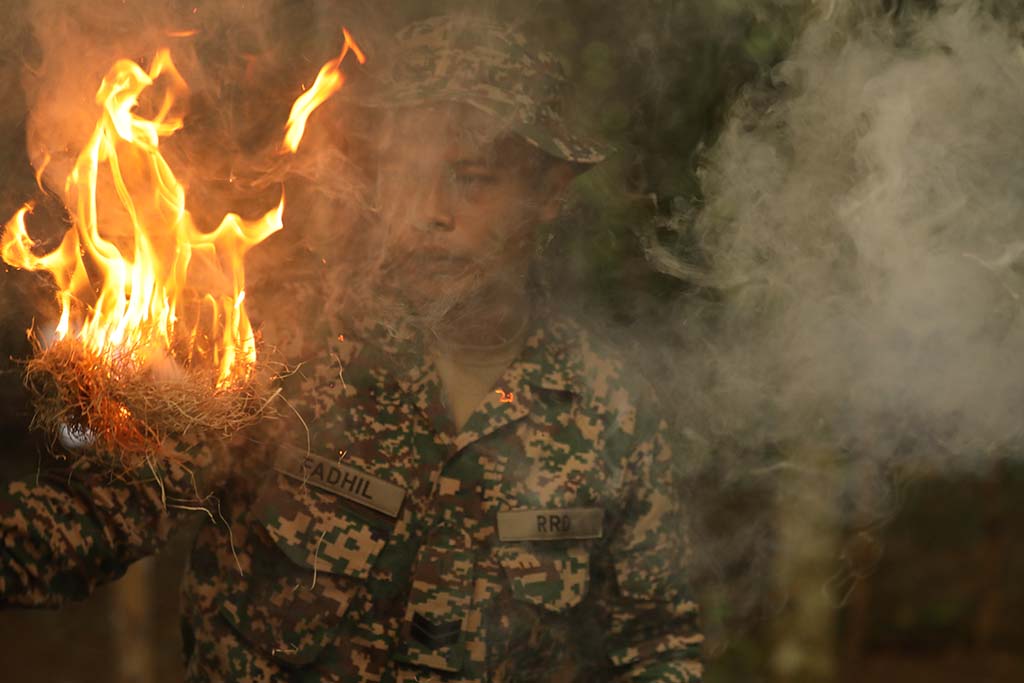Long-range precision fires, including with the High Mobility Artillery Rocket System (HIMARS), and jungle survival skills were among capabilities highlighted during Keris Strike 2025, as more than 4,000 Australian, Malaysian and United States troops bolstered interoperability and readiness.
“No nation can stand alone,” Lt. Gen. Dato’ Tengku Muhammad Fauzi bin Tengku Ibrahim, the Malaysian Army’s deputy chief, said during the opening ceremony in Perak, Malaysia, in mid-July. “Our collective security depends on our ability to work together, understand each other’s doctrine and operate seamlessly as a coalition force.
“This exercise is a testament to our shared determination to face modern threats together,” he said.
Two weeks of drills included coordinated strikes by Malaysian and U.S. forces using the U.S.-made HIMARS, which has a range of 300 kilometers, and the Brazilian-made Artillery Saturation Rocket System, which has a multiple launcher that can fire ammunition of varying caliber. Expert exchanges focused on topics including multidomain operations, civil-military cooperation, and chemical, biological, radiological, nuclear and explosives countermeasures, according to the U.S. Indo-Pacific Command.
During a planning exercise, personnel from each nation integrated frameworks and conducted wargames. “It’s important because it helps us see what’s similar in our processes — and more importantly, what’s different,” U.S. Army Capt. Juan Pilarte said. “By identifying those differences, we can adapt, learn from one another, and ultimately improve how we operate together.”

IMAGE CREDIT: STAFF SGT. ANDRE TAYLOR/U.S. ARMY
Keris Strike began in 1994 as an annual Malaysia-U.S. exercise, with Australia joining in 2024. A keris is a traditional asymmetrical dagger indigenous to Southeast Asia.
The drills reflect deepening defense ties among the nations. Also in July, Malaysia was a first-time observer at Talisman Sabre, a biennial Australia-U.S. exercise that drew more than 30,000 personnel from 19 nations for all-domain warfighting drills in Australia and Papua New Guinea. For more than 50 years, the Australian Defence Force has maintained a rotational presence at Royal Malaysian Air Force Base Butterworth under the nations’ membership in the Five Power Defence Arrangements, which also includes New Zealand, Singapore and the United Kingdom.
Malaysia also is expanding its security partnerships with other South China Sea states, including Indonesia. The Malacca Strait, a maritime choke point between the nations, is a vital shipping route for global trade. China’s arbitrary and expansive territorial claims in the resource-rich sea, which an international tribunal rejected in 2016, continue to heighten regional tensions. Kuala Lumpur has rejected Beijing’s demands to cease oil exploration within Malaysia’s internationally recognized exclusive economic zone. China has deployed patrol boats to monitor Malaysian vessels.
Allied and partner engagements such as Keris Strike symbolize a shared commitment to maintaining regional stability and provide a strategic platform to boost defense cooperation and interoperability, the Malaysian Army stated. They also are a “catalyst for efforts to strengthen joint defense and regional military synergy.”

